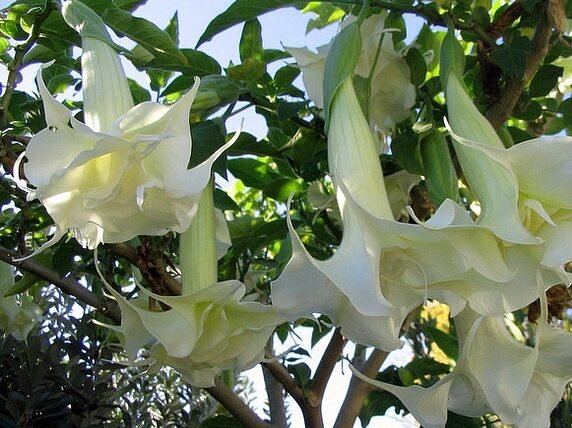Also known as: Garden Angelica, Norwegian Angelica, and Wild Celery
Family: Apiaceae
Origin: Europe and eastern Asia
With a “one letter off” tip of the hat to Anjelica Huston, this plant is linked to two legends: one involving a monk’s dream wherein an angel revealed its medicinal properties, particularly against the plague, and another connecting its blooming to the feast day of Archangel Michael. It is widely believed to have protective and healing powers, even being called “The Root of the Holy Ghost.”
The term angélica is derived from the Greek aggelikós and ággelos, meaning ’messenger’ or ’angel’. Archangélica comes from the Greek word archággalos, which strongly emphasizes the medicinal value of the plant.
On the other side of the coin – e’rrrr root – it is used in voodoo and witchcraft to draw blessings and to ward off hexes and curses, as well as employed in spells and rituals to bring healing, prosperity, and protection.
A biennial plant (meaning that it takes two years to grow from seed to fruition) in the carrot family, it is known for its edible stems and roots – the former consumed raw, cooked like celery, or candied – as well as its use in liqueurs and teas. But beware, it closely resembles other poisonous plants in its botanical family, so proper identification is crucial before consumption.
A large herb with hollow stems and distinctively compound leaves, it can grow up to six feet tall. Its first documented reference was in the 14th century, by Matthaeus Sylvaticus who, in his 1588 book, Tabernaemontanus (not, to the best of my awareness, soon to be made into a television miniseries) wrote of “Angelica with its extraordinary power and virtue, as if the Holy Ghost or the dear angels had revealed this plant and wholesome root to mankind.”
According to him, it was used in hospitals for infectious diseases to counteract “plaguey and pestilential air” – (fatal epidemic diseases, not that most unpleasant smell which permeates entire cities, around pulp manufacturing operations!) He also called it ‘poison root’ regarding its antidotal qualities.
Ethnobotanically, the Angelica archangelica fruit, root, and seed have been used in Eastern Asia and Europe for anxiety, appetite loss, arthritis, bladder control, circulation problems, digestive problems, flatulence, to kill germs, heartburn, insomnia, nervousness, and respiratory catarrh (“runny nose”).
Location specifically, in traditional Austrian medicine, the roots are brewed as a tea or tincture for fever, flu, disorders of the gastrointestinal tract or nervous system, infection, or various respiratory issues.
Elsewhere, it has been regularly applied to the skin for joint or nerve pain, to start menstrual periods, to stimulate the production and secretion of phlegm, skin disorders, and to increase urine production. In combination with other herbs, Angelica is also used in treating certain – shall we say – difficulties of an individual’s nether, more personal, parts – about which I elaborated in The Medicinal Jungle, Volume I. (Herein, I don’t feel this to be the absolutely most appropriate form to discuss such delicate matters!)
But there is more. As a result of its two powerful phytochemicals, angelicin and imperatorin, this plant shows some promising anti-cancer, anti-tumor, and anti-microbial effects, displaying the potential to kill harmful bacteria, viruses, and fungi.
Its extract and some isolated compounds have shown anti-viral activity against the herpes simplex (cold sore) virus and coxsackievirus. (Beyond just sounding nasty, that’s a group of enteroviruses that most commonly cause hand, foot, and mouth disease in children, but which can potentially be the base cause of myocarditis (heart inflammation) and meningitis (inflammation of the brain and spinal cord).
As it can kill mold that grows on walnuts – it shows promise as a potential food-safe preservative to inhibit mold growth. Preliminary test tube studies have indicated that the plant’s essential oil can kill cancer cells as well as disease-causing bacteria such as Staphylococcus aureus and Escherichia coli. And lastly, though I’ve found no reliable scientific evidence to support these uses, some folks have used it for indigestion, to quit smoking, excessive urination at night, and rheumatoid arthritis, as well as memory decline and improvement of cognitive abilities. (Bring me a plateful!)
Angelica root has some culinary uses. The stems can be eaten raw in salads or prepared like Asparagus or Celery in stews or stir-fries. The leaves can be candied or used as a garnish or decoration, and – showing a proclivity to hang out in the neighborhood pub – sometimes used in the production of gin and other “rather spirited sorts.”


